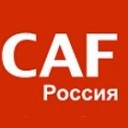Russians give more than is generally believed, according to a new report from CAF Russia called Russia Giving. The research finds that over 40 per cent of the population (33 million people) have given money to NGOs in the last 12 months, and only a fifth have never been involved in any charitable activities. But Russian giving tends to be spontaneous rather than regular and thought-out, with donations made to a very limited range of causes. What can be done to improve the quality of giving in Russia?
The average annual amount donated is almost 5,000 RUB (US$125). The urban population of Russia alone gives about 160 billion RUB (almost US$4 billion) annually, which is comparable with contributions made by the state, corporate donors and high net worth individuals put together.
However, the donations made by Russians are in most cases infrequent and spontaneous. About half of the donors made their donations less often than once every six months, and for 82 per cent the decision to donate was spontaneous. In other words, while a large number of people give money to NGOs, only a small proportion give as part of a thought-out process to achieve specific results.
The spontaneous nature of the majority of donations made in Russia explains why SMS and donation boxes in public places were found to be the most popular giving tools. This fact also supports the relatively small average amount for individual donations: respondents reported that they usually gave 100-150 RUB, with two-thirds (63 per cent) having given 500 RUB or less the last time they made a donation to an NGO.
The research revealed that there are still many barriers to individual giving, including distrust of NGOs and lack of understanding of the importance of their mission. People prefer to give directly to the end beneficiary to guarantee that their donation will be used to full effect. It should be noted that this mistrust is not caused by a lack of information. On the contrary, a lot of information about NGOs is available from a variety of sources – TV, the internet, social media, shops, family and friends, the workplace, etc. Three sources – family and friends, TV and the workplace – enjoy the highest level of trust.
Another issue is that the vast majority of Russian donors (88 per cent) focus on helping children and disaster relief. There are few supporters for other causes, whereas in the UK, for example, although some causes are markedly popular, support of the public is more evenly distributed among a dozen of various causes. The reasons for this limited ‘philanthropic imagination’ include a lack of awareness of less obvious social problems (refugee issues, homelessness); the stigma attached to certain marginalized groups (those living with HIV or addiction); and the underlying Russian belief that good health and a home are the basics of well-being, and the rest is unnecessary.
NGOs in Russia, as in other parts of the world, deal with issues that are not necessarily widespread and not always obvious, but which may have a considerable effect on people’s emotional comfort; feelings of safety and self-confidence; culture and natural environment; social connections; and professional perspectives – the aspects that constitute any well-rounded definition of well-being.
The report will hopefully become a market intelligence tool for Russia’s growing professional fundraising community as it reveals previously unknown trends and provides data on giving patterns and volumes. The most obvious challenge for fundraising professionals and public charities is to overcome mistrust, to build donors’ confidence in a wider range of causes, and to cultivate regular giving. This could be done, for instance, by spreading the practice of payroll giving and recurrent credit card donations, which are still a rarity in Russia. Moving beyond cash donations will also help to grow the size of single donations, which are currently pretty small, as is typical of donations given by text message or to donation boxes.
Maria Chertok is director of CAF Russia.




Comments (0)